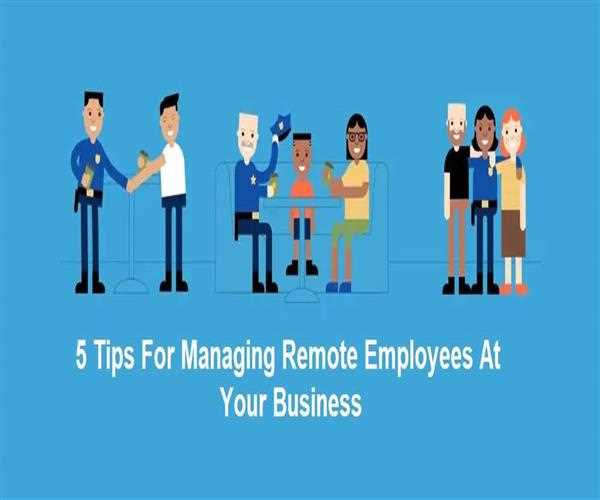Cloud computing, remote desktop services, WAN technology, and all kinds of mobile networks and access points make it possible for anyone to get work done anywhere. Many businesses have employees who travel or even work from home or external office spaces, and for these employees, they need to give them access to the company's internal network. With this change comes the issue of employees using their own personal devices to access your business's network, internal devices, and possibly sensitive data that's stored on your networks. Managing your remote employees is still possible, but it can mean some changes to your IT policies.
1. Have Remote Assistants on Standby to Help With Connection Issues
Chances are more than likely that at some point as your employees are working remotely, something will go wrong in the network access and possibly on their devices. As part of your IT infrastructure and end services, you need to have service technicians available for assistance, or in some cases an AI-powered virtual assistant to help. Remote desktop software integrated into your company network can help resolve issues on the worker's end and help locate undetected network issues. But it's absolutely important for them to be able to connect even after hours if they're in the middle of a big project.
2. Invest In Collaboration Software
Being able to stay in the loop with your employees means you should be able to have live communication and be able to see updates on their work. Collaboration software such as document sharing apps, video chat, CRM modules, and other group-based apps can help keep everyone in touch and on the same page with projects and policy implementation. There are many IT cloud platforms and network management systems that have chat apps built into them, but remote employees will also need a reliable wi-fi or mobile network that can handle high-speed data transfers.
3. Implement Remote Access Controls
Along with having a strong remote support system for your employees, you also want to have robust access controls in place to make sure they only access information that they should. For example, you may want to have an IP address or MAC address filtering to make sure only certain devices or certain networks are allowed to access certain files or servers. You can also categorize your employees into groups and have certain domain-level privileges that each one comes with. These can also have timestamps and logging records that come with them so you can track remote worker activities.
4. Implement A Strong Password Policy For Accessing Your Networks
The most critical element of all network access features is the strength of passwords used to access the network. Even for remote employees, you can set policies that require them to use a wide variety of characters and form passwords that aren't easy to guess. And you also want to have password reset functions built into it in case they've lost theirs. You can also add security to password logins by having two-factor authentication which sends one-time codes to a mobile phone number and cannot be compromised without access to the mobile phone.
5. Have Policies About Work-Related Content And Personal Email Or Storage Accounts
For remote employees working with personal devices and potentially using sensitive documents, you don't want to have those documents floating around where they could be compromised. That's where strong bring your own device policies to come in, and you need to be clear about what should be done with company information on them. You should have policies that forbid using unofficial work emails or cloud storage services to send documents to. You also should make sure your servers are only accessible through a secured remote access protocol or a trusted VPN. This lessens the chance of data breaches.
In conclusion, how you enable connections and secure access to your IT network remotely will require a setup that can handle external devices and have the right firewalls configured. But it's still possible to bring in remote employee devices and have them operating as they would be if they were inside business headquarters. You just need to go with a reliable remote network control provider and make sure the system can handle different devices and operating systems while not slowing down your internal network.




Leave Comment